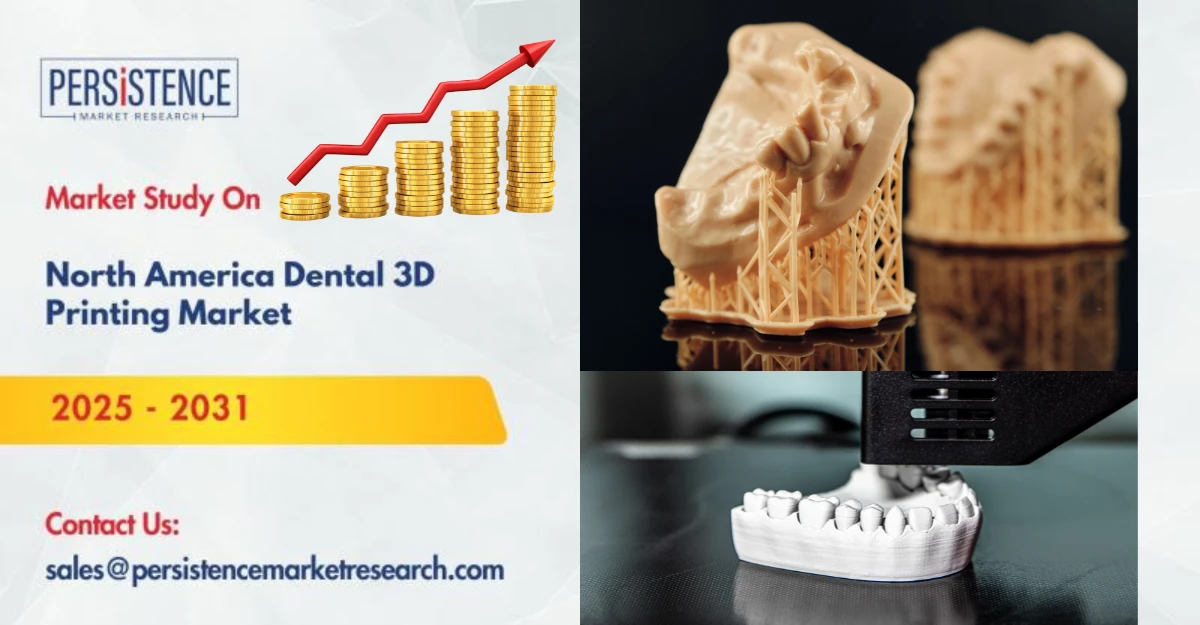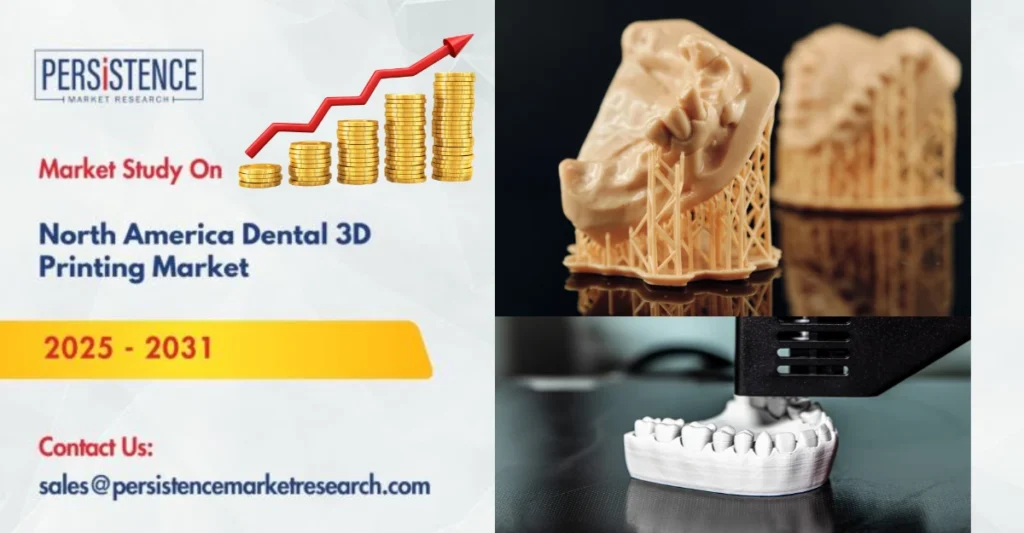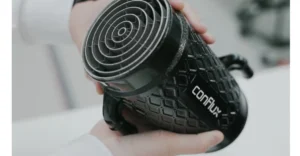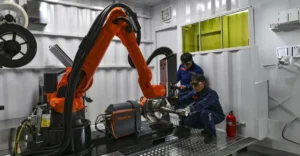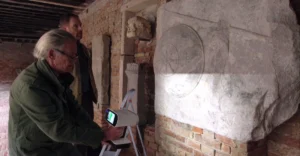The North America dental 3D printing market is set to grow at a 25.2% CAGR, reaching $6.55B by 2031, fueled by tech innovations and demand for personalized dental care.
In 2024 it is projected that dental disorders in North America will reach a staggering 6.55 billion USD which is 25.2 percent growth from the current 1.36 billion dollar mark. This growth will be made possible due to the rise in the incidence of dental disorders along with growing demand of customized solutions for dental care.
This need is supported by the statistics of Center for Disease control and Prevention which states that out of total American adults, 90 percent have had at least one cavity while 46 percent adults aged 30 show symptoms of gum disease. These figures need a solution which is advanced enough the cater to the issues on a larger scale.
Beyond hobbyist printing
The type of printing which is currently being used in dentistry is not your local electronic-grade 3D printers but is rather termed as industrial-grade additive manufacturing, a process where an object is constructed layer by layer.
Additive manufacturing undoes everything that subtractive manufacturing in a product’s life cycle does: In a product’s life cycle, it begins as a solid block of material that is cut down into a desired product in subtractive manufacturing. In terms of artistic analogies, sculpting with sculpting clay would equal in comparison to carving out a shape from a solid marble block.
“You get a lot more freedom of design,” an insider shares, elaborating on why compassion manufacturing is highly regarded. “When you’re machining a block, there are restrictions, such as a 90-degree turn. You have to either pivot, slide, reposition, or flip the block, or even if positioned, sometimes the required view is not achievable. An addtive process lacks these limitations. You can always do this, but on traditional manufacturing methods, it’s usually more complex and comes at a greater cost, which can lead to even longer wait times. With other methods, everything comes with a price.”
Prosthodontics Leads The Market
Prosthodontics, which includes crowns, bridges, and dentures, is estimated to have the highest market share in North America, with more than 60% share in 2024. This segment is fueled by demand from the ever-increasing elderly population who require dental prosthetics. With the advent of 3D printing technology, the speed and accuracy of dental procedures have greatly increased with the ability to manufacture customized and specific precision prosthetics.
Another element that is enhancing the market is the growing use of digital workflows. The implementation of computer-aided design (CAD) and computer-aided manufacturing (CAM) systems into dentistry enables better treatment delivery and improves turnaround time. The market is likely to continue growing as more dental laboratories and clinics utilize 3D printing technologies for mass-customized dental restorations.
“A hallmark of these groups is that they do not have the luxury of time,” observations from the industry tell us. Specialists can develop bespoke parts more economically and rapidly than through conventional techniques, which is a notable advantage of 3D printing.
The growth of new materials driving changes in this area is noteworthy. In 2024, the materials segment is projected to comprise approximately 41.2% of the market because of new developments in biocompatible photopolymer materials. These materials are employed in producing surgical guides and crowns and bridges to be used permanently.
As stated by an industry expert, “I think what’s changed dramatically over the past five to seven years has been all about material development. The materials as such are just incredible, as they have incredible levels of heat resistance and strength versus weight ratio.”
By 2024, dental laboratories will control 58.2% of the market share because they are able to 3D print and mass customize. Such facilities are capable of purchasing Industrial grade 3D printers which are priced between $20,000 and $600,000, and can therefore, efficiently and inexpensively produce great quantities of customized dental devices.
Regional leaders and future developments
The United States is leading the North American market’s dental 3D printing and has the most market share compared to other countries. This is due to the sophisticated healthcare system, quick adoption of digital dentistry, and the large number of dental laboratories and clinics that utilize 3D printing.
Like all other fields, throughput will capture the next frontier in the 3D printing industry for dentistry. “The concern in the future will be the printer’s level of speed. If we need one hundred different variants of a product, we don’t want one hundred printers next to each other. We would need to establish the tens printers we have and get them to print a lot quicker” said one expert. The quest now is, “How quickly can one make a part which is accurate, strong, all the other things that the customer cares about, but faster?”.
As such, implant printers is an extraordinary leap forward in modern medicine. It opens new opportunities for the manufacture of personalized implants, prostheses, and dental crowns for patients suffering from facial deformities. Always looking forward, with such innovative ideas we can anticipate the hyphenation of medicine and engineering as biosystems development. Patients will have available new surgery and prosthetic solutions tailored to their individual needs. Along with the progression of these printers, the entire healthcare system will need to shift towards a personalized health care model. Such medical technologies will allow the uniqueness of every individual patient to be taken into account. In response to these developments patients can expect an even higher value of care.


